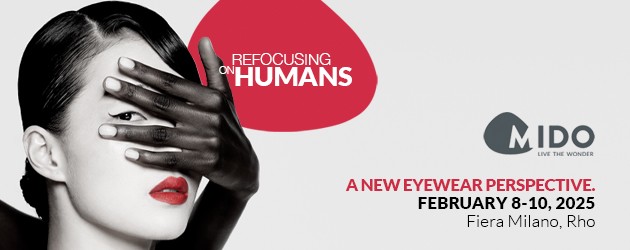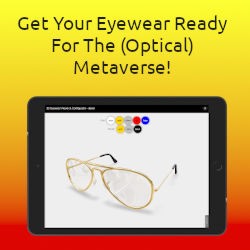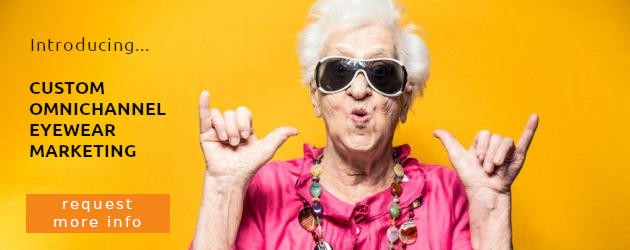Industry News
National Survey Reveals Australians Are at Serious Risk of Eye Damage from UV light
 While the eyelid region is one of the most common sites for nonmelanoma skin cancers, Australians are not heeding the sun smart warning when it comes to their eyes. ZEISS conducted a national Australian survey and released the findings in its MyEyeQ report recently showing that Aussies lack basic knowledge of good eye health and aren't doing enough to protect their eyes.
While the eyelid region is one of the most common sites for nonmelanoma skin cancers, Australians are not heeding the sun smart warning when it comes to their eyes. ZEISS conducted a national Australian survey and released the findings in its MyEyeQ report recently showing that Aussies lack basic knowledge of good eye health and aren't doing enough to protect their eyes.
The key findings of the report are:
- Kids particularly vulnerable - The majority of respondents (73 percent) are unaware that most damage to the eyes from UV light happens before age 18
- People don’t know what they’re buying - Almost half (45 percent) are not aware of the level of UV protection in their sunglasses. Spectacle wearers fare even worse – a staggering 71 percent are not aware how much UV protection their lenses offer.
- Taking skin protection more seriously - One in three respondents indicated they are more concerned about protecting their skin from sun damage than their eyes
- Blue light fears eclipse concern for UV - Recent media ‘hype’ around the risk of blue light (from devices and screens) might be detracting from the sun smart message. The survey found that overall concern about the risk to eyes from blue light was 66 percent, marginally below overall concern about UV light at 78 percent.
- Parents find the market very confusing - 62 percent of parents said they find it difficult to understand UV protection levels on children’s sunglasses, along with 61 percent of parents with children who wear spectacles.
- Aussies in the dark: 3 out of 4 don’t know most damage to the eyes happens before age 18
- Half of Australians are only ‘somewhat concerned’ about the risks of UV light to eyes
- Understanding the market: over 60 percent of parents find it confusing to understand UV protection levels on children’s glasses
Thanks to Australia's geography, it is the skin cancer region of the world, accounting for 80 percent of all new cancer diagnoses each year. However, despite ongoing ‘sun smart’ warnings, Australians are in the dark when it comes to the risk of UV exposure to their eyes. While two out of three Australians will develop skin cancer by the age of 70, people may not be aware the eyelid region is one of the most common sites for nonmelanoma skin cancers, in addition to the many other forms of eye damage resulting from high UV exposure. Despite this risk, one in three respondents indicated they are more concerned about protecting their skin from sun damage than their eyes, while almost half of Australians (45 percent) are only ‘somewhat concerned’ about the risk of eye damage from UV light.
"We are fed so much information these days about skin anti-aging and sun damage, but it’s important people understand our eyes face the same risks, and the damage begins early," said Hilke Fitzsimons, General Manager, Carl Zeiss Australia. "Photoaging of the skin around the eyes, several cancers on the skin around the eye and within the eye, cataracts, macular degeneration and preventable blindness are among the consequences of UV exposure. Consumers need to take this information very seriously."
Consumer confusion may be one of the reasons we’re not doing as much as we should to protect our eyes, and well-meaning parents are especially bamboozled. The parents surveyed indicated they are very concerned about protecting their children’s skin and eyes from sun damage; over three quarters (79 percent) said they want their children’s sunglasses and spectacles to have the highest levels of UV protection possible. However, there is also widespread confusion about what to buy, with 62 percent of parents saying they find it difficult to understand UV protection levels on children’s sunglasses, along with 61 percent of parents with children who wear spectacles.
Ms Fitzsimons said categorisations and labelling can be misleading. "There's a difference between good intentions and actually doing the right thing, but it can be hard to distinguish the two," she said. "There are different levels of UV protection, different categories of lens, and labelling can be misleading; for example, some companies claim ‘full UV protection’ on lenses that only protect up to 380nm – to achieve full UV protection you need lenses that are 400nm. People are also confused by the distinction between things like UV protection and polarisation. Polarisation eliminates glare and can be more comfortable for the eyes but does not offer any additional UV protection. Blue light fears on the rise Recent media ‘hype’ around the risk of blue light (from devices and screens) might also be detracting from the sun smart message. The survey found that overall concern about the risk to eyes from blue light was 66 percent, marginally below overall concern about UV light at 78 percent. To some degree, the blue light conversation has eclipsed UV concerns. While the media has latched onto blue light, there is no firm clinical evidence to suggest that blue light from digital devices poses a health risk anywhere close to that of UV," Ms Fitzsimons said.
"Australians recognise they need to protect their eyes, but they are underestimating the risks and are confused by what they see on the shelves and hear in the media. The industry has an important role to play in consumer education and purchase behaviour."



